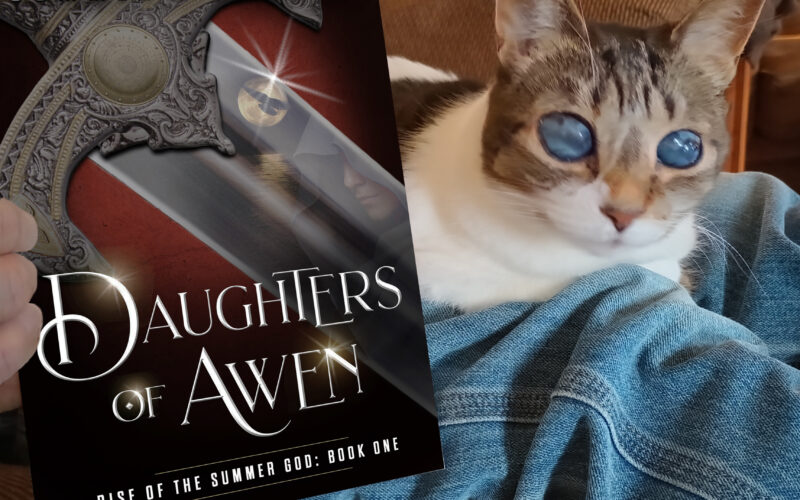According to Bradbury’s retelling, it took him nine days, a library typewriter, and a pocketful of dimes to crank out his first version of Fahrenheit 451. Is such a feat possible in today’s distracting world? We decide to give it a try (or at least one day of a try) and report on the results it in this episode. If you want a play by play of the day, check out our bonus podcast on Patreon.
In another chapter of his writing craft book, Zen in the Art of Writing, Bradbury recounts how he mined his childhood memories to write his book Dandelion Wine. As a memoirist, Renee shares how she digs deep into her younger self’s recollections, which aren’t quite as idyllic.
The Writing Activity
For one day, write for a whole 6 hour shift.
Chapter 5: Investing Dimes: Fahrenheit 451
Unlike other craft books which are dedicated to mastering the art of writing, “Investing Dimes” is an introduction to an already well known and often taught novel, Fahrenheit 451. As far as ‘Craft’ goes, Bradbury shares his process for writing Fahrenheit 451, which ultimately became his process for writing most of his other works as well.
$9.80 ($105.53 - adjusted for inflation)

Once upon a time, Bradbury needed a distraction free place to write. At home, he had his children and other pressing matters. But he couldn’t afford his own office, so he went to the public library where “in neat rows, were a score or more of Remington or Underwood typewriters which rented out at a dime a half hour.”
Chapter 6: Just This Side of Byzantium: Dandelion Wine
Like chapter 5 (and we’re assuming the rest of the book), Bradbury steers away from outright writing advice and recycles previously published introductions to his novels. Even so, he still relays wisdom in the creative writing process while discussing his novel, Dandelion Wine.
Have you read Dandelion Wine? Neither have we (although Renee listened to (and fully recommends) the Radio Drama adaptation Bradbury mentions in this chapter). Dandelion Wine is an ode to Bradbury’s childhood in Waukegan, Illinois (the novel takes place in Green Town, Illinois). Bradbury dips into the well of his memory: the people, the place, and the experiences of growing up in a small town in the 1920’s and 30’s.
And for this chapter, unlike Gardner, he encourages the writer to write what they know, dedicate characters to real people and insert them into real places. The trick, however, Dear Writer, is to play.
Once I learned to keep going back and back again to those times, I had plenty of memories and sense impressions to play with, not work with, no, play with. Dandelion Wine is nothing if it is not the boy hid-in-the-man playing in the fields of the Lord on the green grass of other Augusts in the midst of starting to grow up, grow old, and sense darkness waiting under the threes to seed the blood.
-Ray Bradbury
Continuing the Conversation: Memoir

Although Dandelion Wine (and the rest of the Green Town trilogy) is fictional, the setting and many of the characters come from Bradbury’s childhood (the 12 year old protagonist is based on Bradbury himself). Given Bradbury’s love of sci-fi and fantasy, we don’t think he’d mind a little speculation…so, is his novel, in fact, a kind of memoir?
Memoir, unlike Autobiography, focuses on a specific time and place in a person’s life. Believe it or not, memoir hadn’t yet been established as the genre we know it today until the latter half of the 20th Century. Scholars argue the earliest autobiography was Tristia, by Ovid, a lament on his banishment from Rome. St. Augustine’s Confessions, may be the earliest text which resembles the Western memoir. You can find memoir-like narratives written by Julius Caesar to the Middle Ages (Margaret of Valois), the Age of Enlightenment (Louis de Rouvroy, duc de Saint-Simon), the 18th C. (Henry David Thoreau) (we discuss slave narratives in a previous Continuing the Conversation), and Holocaust narratives (Elie Wiesel).

Unless, however, you were already famous and noteworthy, regular people didn’t just go around writing their life’s story. So what was a writer to do in the early to mid 20th Century? They publish their accounts as fiction. Stop Time by Frank Conroy is a famous example. Also, one could also consider the Will Eisner’s graphic novel, A Contract with God, and Maxine Hong Kingston’s The Woman Warrior which mixes autobiography with folktales, another.
Then the 90’s happened (you know, like 10 years ago) and the memoir as we know it exploded: Angela’s Ashes, Maus, The Liar’s Club, etc. Today, everyone is writing a memoir (even a co-host on this podcast!). There’s graphic memoir, flash memoir, essays, hybrid forms…and is currently the most popular non-fiction genre in the U.S.

Tribute: William Maxwell

William Maxwell, a fiction editor for The New Yorker for thirty years (1936 – 1975), was a and ecclectic writer of fiction, creative non-fiction, and children’s books. He graduated from Harvard with an M.A. and taught at the University of Illinois. An influential mentor to a slew of famous writers, such as Eudora Wheatly, J.D. Salinger, Shirley Hazzard, John Updike, Vladimir Nabokov, etc, he was a cherished gem of the mid-century American writing community. His novel, So Long, See You Tomorrow, won the National Book Award.












What’s Really Happening When AI Writes?
We've been putting AI chatbots through creative writing challenges, but what are these systems actually doing when they write? In this episode, we bring in AI expert Bill Moore....